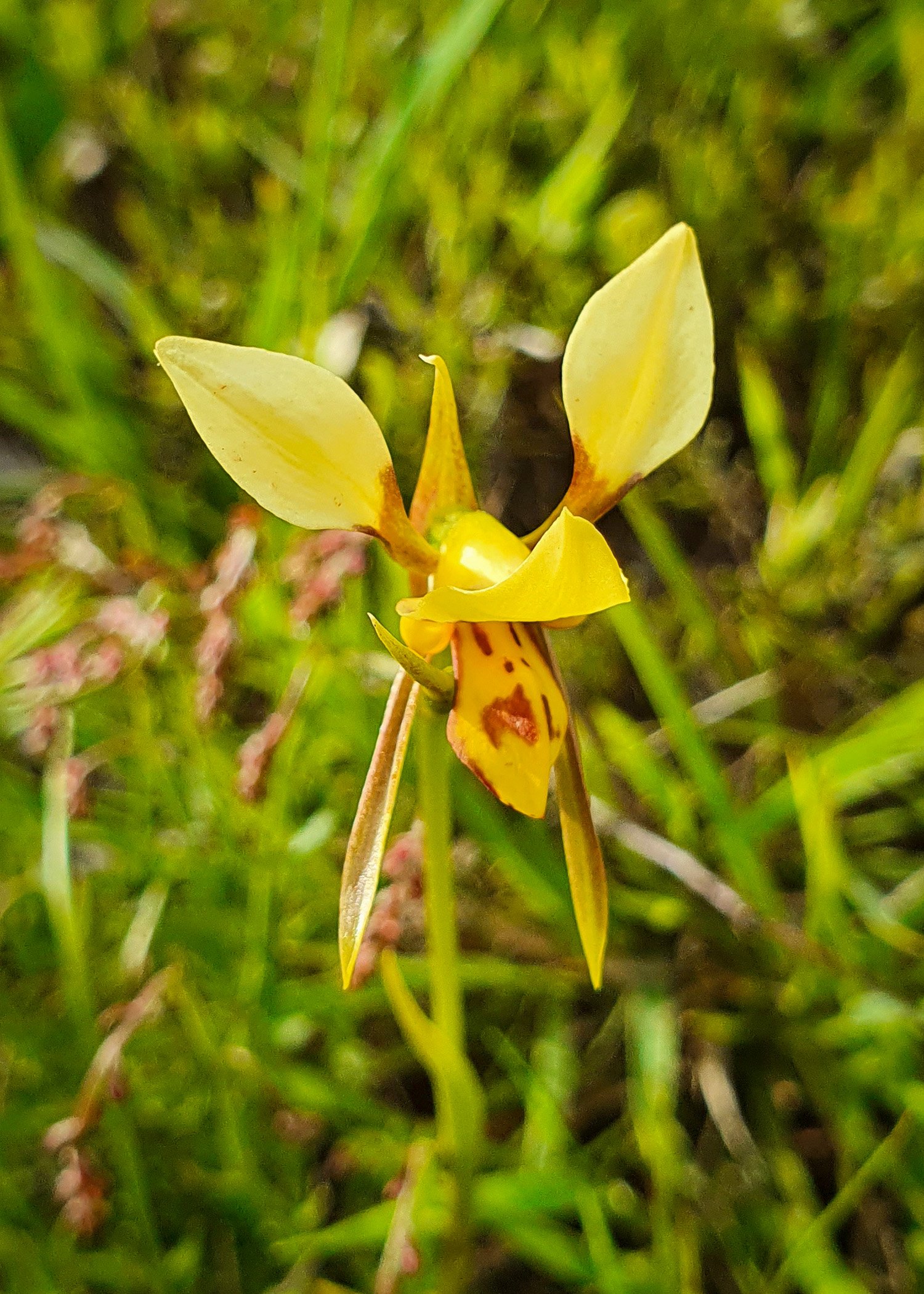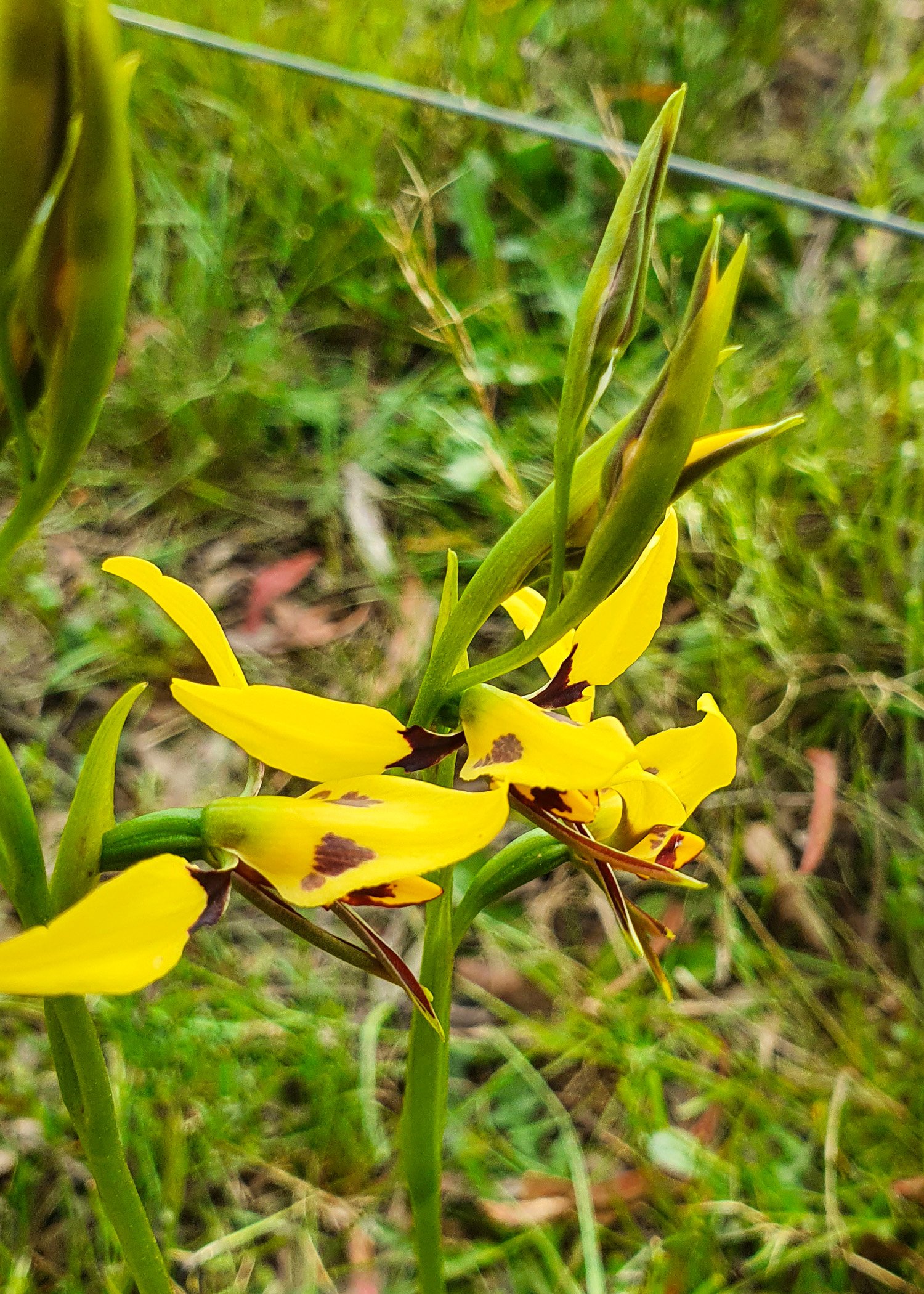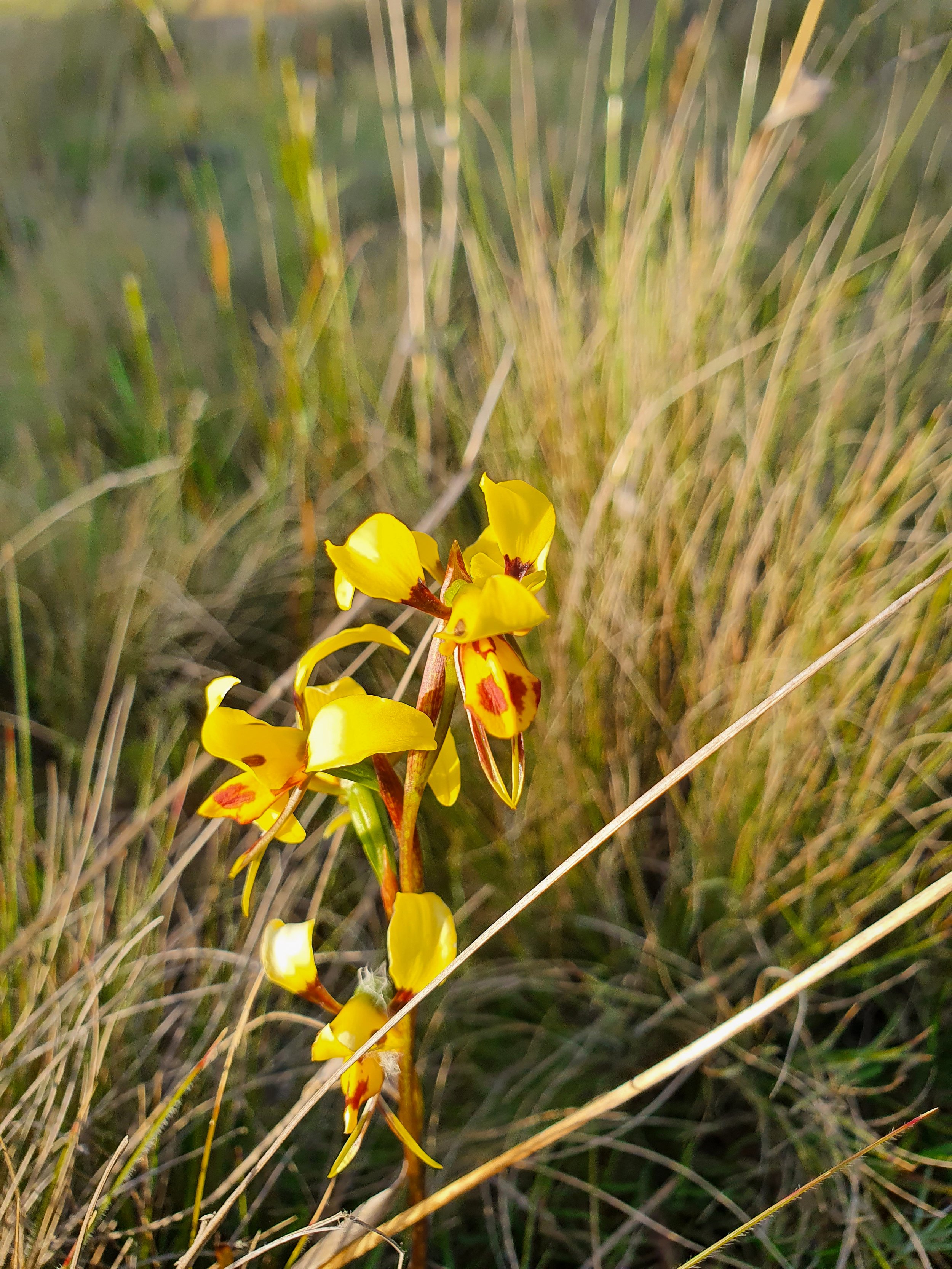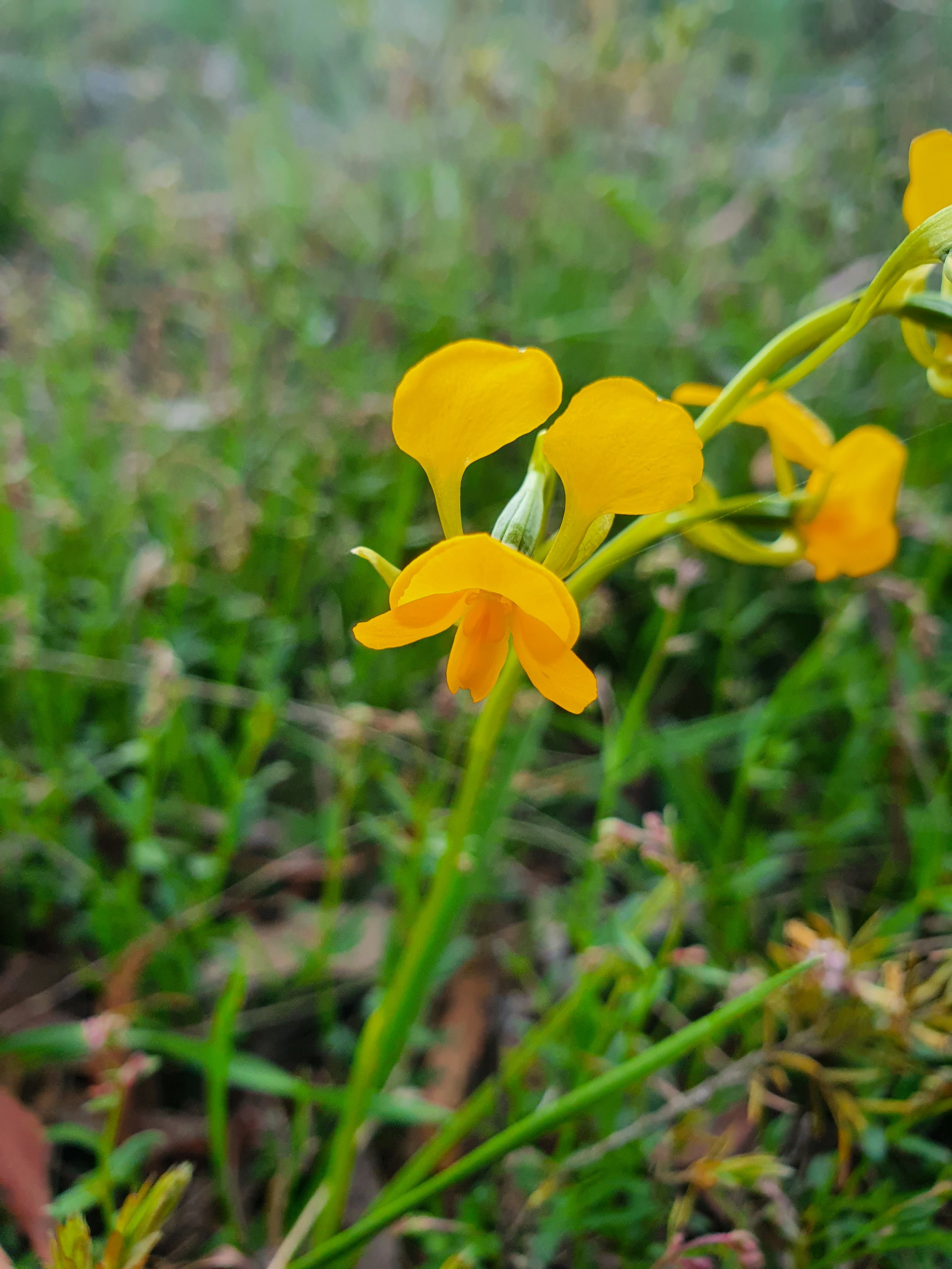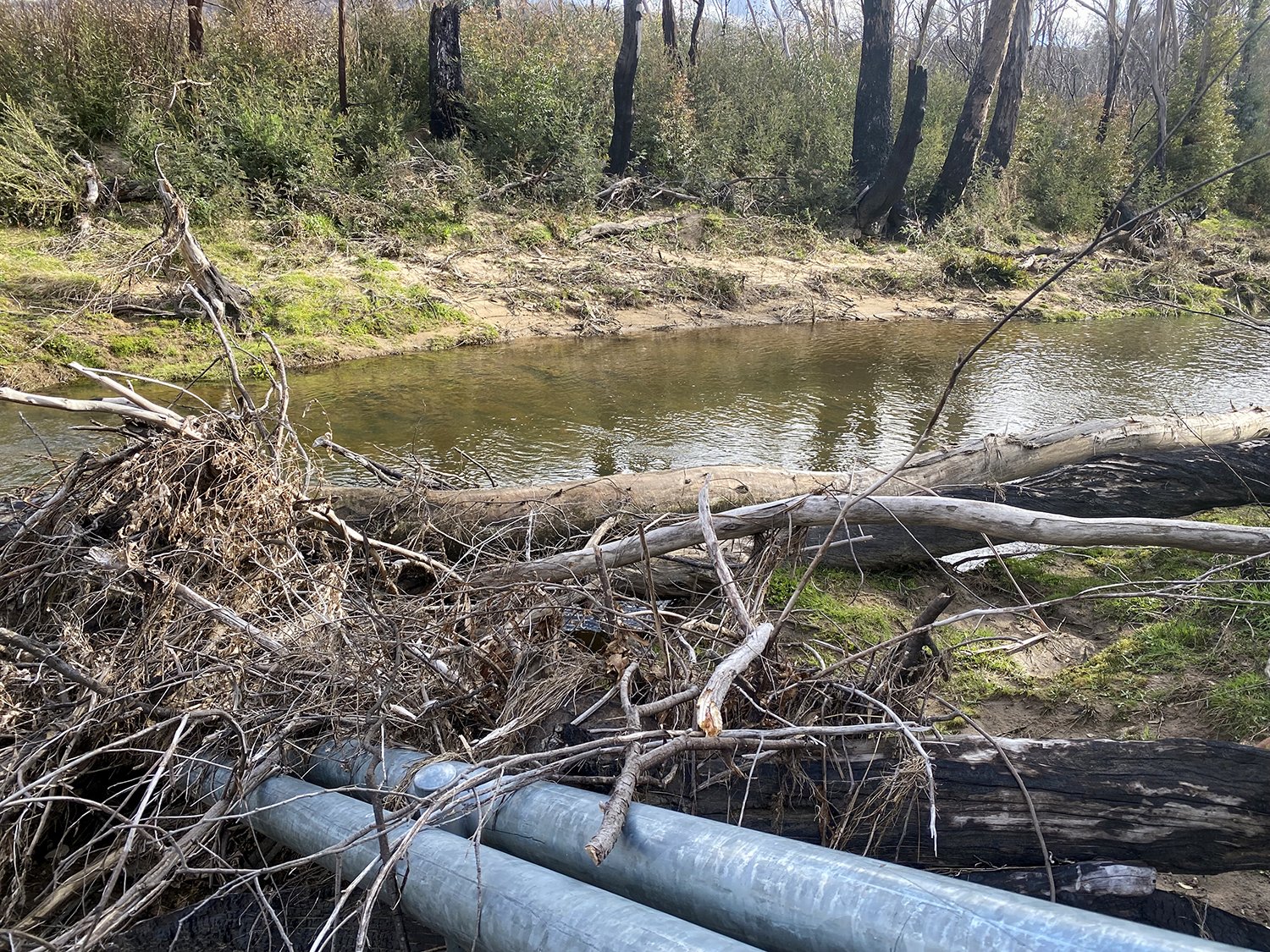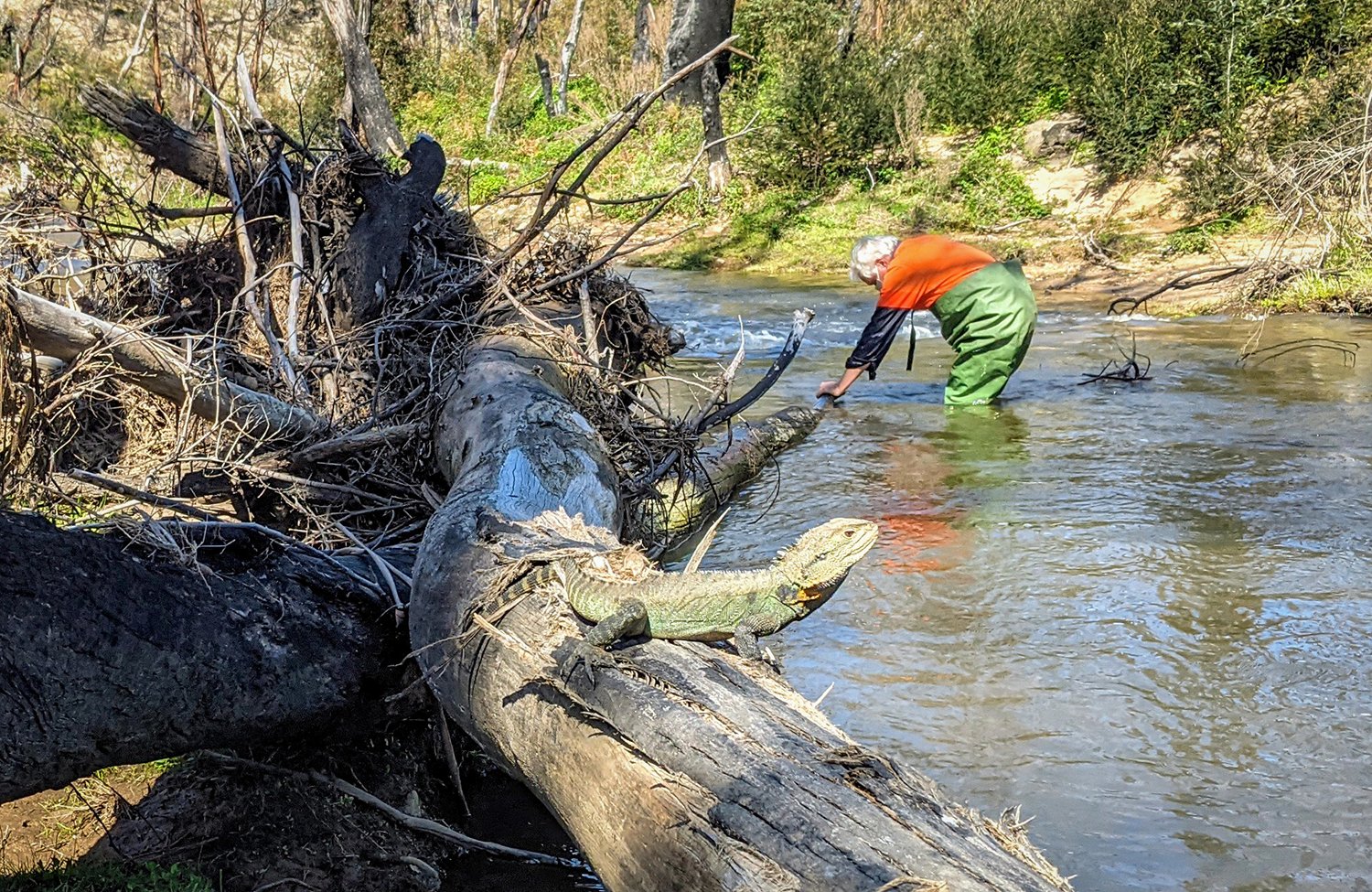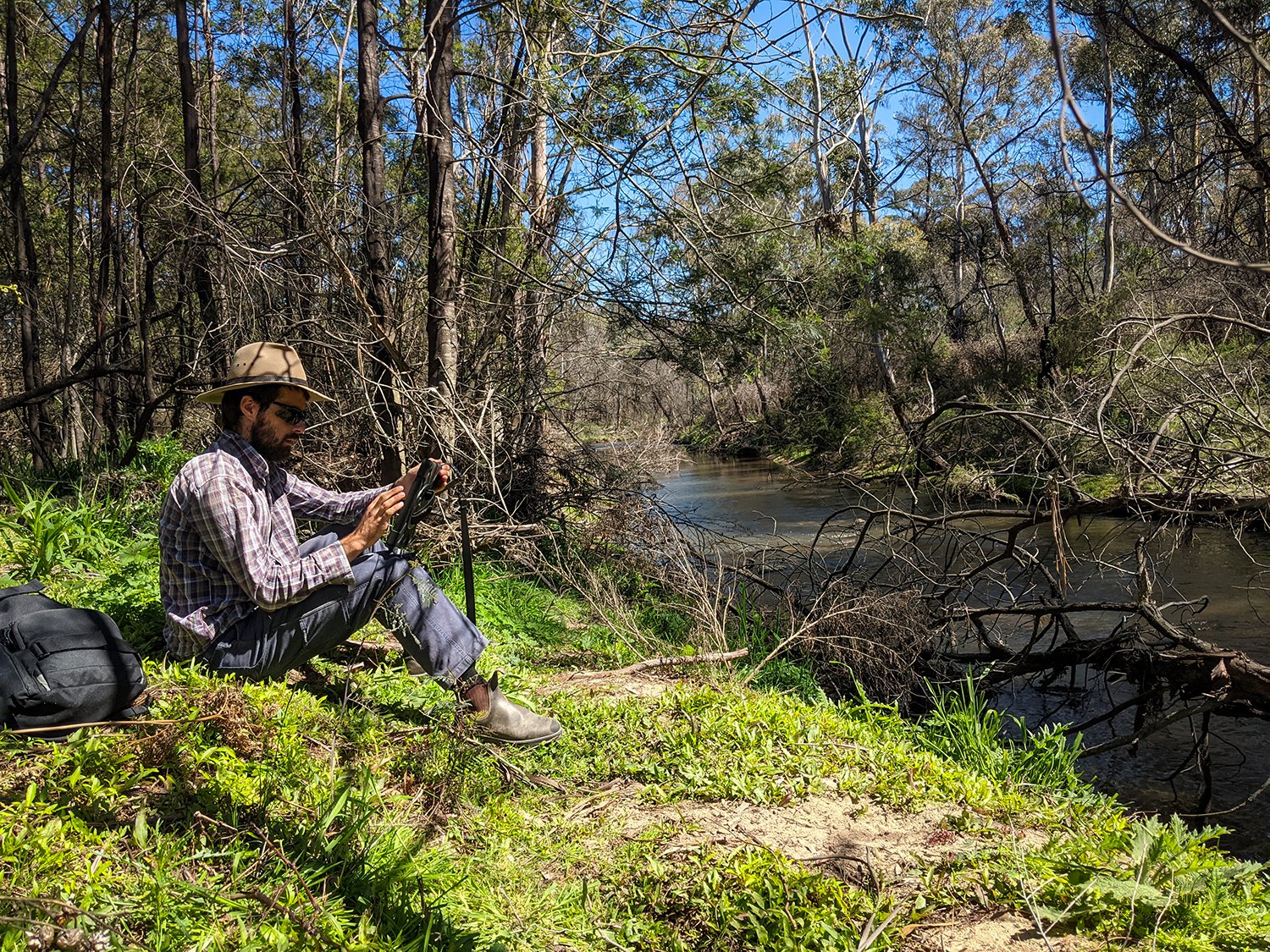While Research Coordinator Luke Peel and Science Officer Ira Dudley-Bestow were conducting the baseline Rapid Appraisal of Riparian Condition (RARC) surveys across properties in the catchment recently as part of the Mulloon Rehydration Initiative, they also took time to see if they could locate any Buttercup Doubletail (Diuris Aequalis) which are an endangered terrestrial orchid found in forests and woodlands near the Great Dividing Range on the NSW Southern and Central Tablelands. Only a few, small scattered populations remain in the wild, including a previous sighting along the forested ridgeline area west of the main driveway into the Home Farm.
While they didn’t find any this year, they did note its similar cousin the Tiger Orchid (Diuris sulphurea) and many other lovely springtime blooms. Several landholders taking part in the Mulloon Rehydration Initiative also sent in photos of orchids on their properties to see if they had any on their farms. So far this year the orchids remain elusive!
At ‘Landtasia’ Luke and Ira came across a debris piled up against a log that had been brought down in floodwaters from the Upper Mulloon catchment after it was severely burnt in 2019-20. The debris was piled up behind stream gauge housing that RSK Welding had assisted with installing in 2020. Luckily it was strong enough to maintain integrity, with only a slight bend in the housing.
When Luke and Hydrologist Tony Bernardi visited the site for routine maintenance on the stream gauge sensors, Tony tried to clear away smaller debris that could have caused potential issues for accuracy of readings. But while the debris pile could issues for the stream gauge, it had also become home for a great water dragon! Many other debris pile ups and water dragons were spotted at other locations along Mulloon Creek, plus a surprise sighting of a platypus out during the day.
Ira using the new tablets to record data, then capturing RARC survey from hammocks a landowner had placed under some trees – it was too good an opportunity not test out. Ira also had to test out a wombat hole, creek-side at the Home Farm.
Field work is never boring in the day of our scientists!
The Mulloon Rehydration Initiative is jointly funded through the Mulloon Institute and the Australian Government’s National Landcare Program. The initiative is also assisted by the NSW Government through its Environmental Trust.
